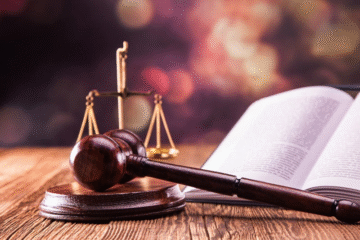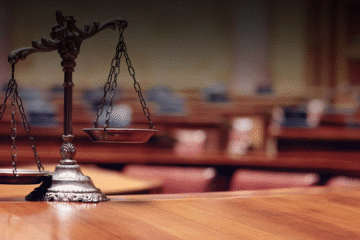This article is written by Sushant Kumar) M. s. College Motihari. An intern under legal Vidhiya.
Abstract: –
This act mainly aims to provide guidance and protect alleged children. The law relating to children is alleged and found to conflict with the law. Children in need to care and protection from others. People know children to their basic needs through proper care, protection, development, treatment, and basic education. Which people adopt the child and know the basic care idea. Adopting a child-friendly approach in the refereeing and disposal of matters in the best interest of children and their recovery through processes provided and institutions. Many children are involved in crime because they don’t know about it. Many children do not get basic education, their basic requirement and basic guidance from people at the right time. Juvenile justice (care and protection) is guided and protects children who involve in the wrong work and the wrong environment.
The process by which the adopted child is permanently and separately from his parents. The legal child of his adoptive parents with accepting all the rights and is the same as his parents. Which children left by his adoptive parents or guardians then who has been declared impulsive by the Committee after an inquiry? This juvenile justice protects child gives them guidelines and protection for alleged children and adopt children.
This law fully supports financial who have completed the age of eighteen years but have not completed the age of twenty-one years.
The bill introduces foster care in India. Families will sign up and register for foster care. which children who are accused, abandoned, orphaned children, or those in conflict with the law will be sent to them. Families will be monitored and should receive financial aid from the state government. In law adoption, disabled children and children who are physically not strong and financially not capable will be given priority. Parents giving permission for their child for adoption will get 3 months to reconsider and compared to the earlier provision of 1 month.
Keywords: -Accused, Protection, Government guidelines, Adaptation,
Introduction: –
Juvenile Justice (Care and Protection of Children) Act, 2015 has been passed by the Parliament. After the Nirbhaya case, this action is needed for our society. India has also had an acute debate, and protest on many of its provisions by the Child Rights group. It replaced the Indian juvenile delinquency law with the Juvenile Justice (Care and Protection of Children) Act 2000 and allows for juveniles in dispute with the Law. This law accused the age group of 16 to 18 and involved in odious Offences. The Act also try how to find and create a universally accessible adoption law for India and overtake the Hindu Adoptions and Maintenance Act 1956. This law applied to Hindus, Buddhists, Jains, and Sikhs also. The Guardians and Wards Act of 1890 applies to Muslims, though not replacing them. The Act came on 15 January 2016. It was passed on 7 May 2015 by the Lok Sabha and in mid-intense protests by several Members of Parliament. It was passed on 22 December 2015 by the Rajya Sabha.
This law adoption plan protects orphan children abandoned and surrendered children. The existing Central Adoption Resource Authority has been given the status of a statutory body to enable. This act performs very well and its function is also more effective. A separate Child on Adoption provides detailed providing relating to adoption and punishments for non-compliance.
Amendment Act: –
This Act has been amended by the Juvenile Justice (Care and Protection of Children) Amendment Act bill in 2021. Which has come on 1 September 2022. Recently, the Juvenile Justice amendment bill 2021 was passed by the parliament. Some of the Important keys of this amendment bill. We have discussed it.
Change in definition of Serious Offences According to the amendment act and if any child is charged with a serious offence. The Juvenile Justice Board will investigate the accused child. If serious get offences are serious for which the punishment under the Indian Penal Code or any other law is imprisonment between three to seven years. According to the Amendment Bill, major offences also include those for which the minimum age is specified and their age is less than seven years in prison and the maximum age is greater than seven years in prison.
Juvenile Justice (Care and Protection of Children) Act, 2015 has been passed by the Parliament of India and mid-time-intense controversy, and protests on many of its provisions by the Child Rights law. It was passed on 7 May 2015 by the Lok Sabha amid protests by several Members of Parliament. It was passed on 22 December 2015 by the Rajya Sabha.
In adoption procedures for orphan, abandoned and surrendered children. A separate child from a parent on Adoption provides detailed provisions relating to adoption and punishments for non-compliance. Processes have been streamlined with timelines for both in-country and inter-country adoption including declaring a child legally free for adoption. This Act has further been amended by the Juvenile Justice (Care and Protection of Children) Amendment Act, 2021 which has come into force on 1 September 2022.
Case: – (1) Delhi Gang Rape case: –
The main reason why the judiciary finds a need to amend the law was the decision of 2012. Delhi Gang Rape case also known as probably known as the Nirbhaya Case allowed the accused age is 18 then government present a juvenile justice bill present in Lok Sabha, where the accused aged 16. After the 2012 Delhi gang rape case, the accused in the case was a few months away from being 18 and hence tried in the juvenile court. The court said the juvenile court delay its judgement. After the supreme court said the juvenile court to give its judgement. The sufferer’s mother criticized the judgement of the court and appeal not punishing the juvenile the court was encouraging other teenagers to commit similar crimes. Because of this dissatisfaction towards the court judgement. The Minister of Women and child development said that they were preparing a new law that will allow 16-year-olds to be tried as adults. She said that 50% of juvenile crimes were committed by those under 18 age who know that they will get away with it. She said and wants to add that changing the law, which will allow them to be tried for murder and rape as adults will scare them.
Case (2): – Sheela Barse & Anr. v. Union of India & Ors.
This case was filed in the Hon’ble Supreme Court for getting directions regarding the release of children below 16 years of age from jails. The petitioner was also praying to court for the complete information about children who suffer or are detained in jails and the alive of juvenile courts, homes, and schools in the country. The Hon’ble Supreme Court, acting on the petition and said: the State Legal Aid & Advice Board to send two lawyers to each jail within the State once a week to provide legal help to children below 16 years of age and who are detained in prisons. All State Governments are to report the number of children’s homes, remand homes & observation homes for children in their States, and the number of accuse in each of those institutions. States to properly enforce the ‘Children’s Act’ enacted by them. They should file affidavits to show cause why they are not implementing those Acts. District and Sessions Judges to make regular visits to the District Jails and take particular care of child prisoners.
In this case, the Hon’ble Supreme ordered the directions relate to juveniles. In these cases, where a child has been accused by the court of an offence that is punishable with imprisonment of fewer than 7 years. The investigation should be completed within 3 months from the lodging of the FIR and the trial also should be completed within 6 months from the filing of the charge sheet in court. Children should not be registered in jails under any circumstance. Remand and observation homes should be set up by the State Governments. If there is no accommodation in these remand or observation homes, then the children should be released on bail. We see to it complete uniformity and the Union Government should pass a Children’s Act for the trial who under age children below 16 years of age and make certain recovery of such children.
Case (3): -Sampurna Behura v. Union of India & Ors. [Writ Petition (Civil) No. 473 of 2005]
This case was primarily related to the implementation of the Juvenile Justice (Care and Protection of Children) Act, 2000, and Juvenile Justice (Care and Protection of Children) Act, 2015 (“JJ Act, 2015”). The court knows that the children are the future of our country and they should be looked at. So, it has issued several directions to make certain proper implementation of the JJ Act, 2015. Central and State Governments should be certain that all the vacancies in the National Commission for Protection of Child Rights (NCPCR) and State Commissions for Protection of Child Rights (SCPCR) are filled for the effective functioning of these statutory bodies. State-Level Child Protection Societies and District Level Child Protection Units should take assistance from NGOs and civil society for proper implementation of the JJ Act. State Government should make certain the filling up of all the positions in the Juvenile Justice Boards and Child Welfare Committees. JJBs and CWCs should have regular sittings to make certain that there is no backlog of inquiries and that children in need of care & protection are being taken care of. National & State Commissions for the Protection of Child Rights should take up studies on various societal issues so that the State Government can take remedial steps on those issues. State Governments should appoint the necessary number of Probation Officers for the effective implementation of the JJ Act, after getting reports from the NCPCR and SCPCRs. Special Juvenile Police Units should be set up so that the police can effectively fulfil their role as the first responder on issues arising out of offences committed by or against children. National & State Police Academies should consider including topics related to child rights in their curriculum. State Governments were advised to guidelines and plan to make certain that all the Child Care Institutions are registered and the issues of missing children & trafficking are addressed.
Conclusion: –
Juvenile justice act is needed for our country. The child crime level is high in our society. The Government even after facing strong opposition and condemnation from various sections of the Society and passed the Juvenile Justice Act 2015. This will not allow children aged 16 to 18 years to be tried as adults. They commit odious crimes. The bill was pending in Parliament where the government despite lacking a majority, managed to get it passed. It is necessary to understand that recovery and not punishment should be the policy. It is necessary to examine the provisions of the Act and carefully assess its possible impact on society and our country. Every time government should rectify an enquiry about the bill. In the modern era, this bill is needed in our society. This bill controls child crime.
Reference: –
- https://cara.nic.in/PDF/JJ%20act%202015.pdf
- https://en.wikipedia.org/wiki/Juvenile_Justice_(Care_and_Protection_of_Children)_Act,_2015#:~:text=An%20Act%20to,or%20incidental%20thereto.
- https://www.legalservicesindia.com/article/2147/Juvenile-Justice-Act,2015.html#:~:text=The%20reason%20because,will%20scare%20them.
- https://www.lawyersclubindia.com/articles/landmark-judgments-on-juvenile-justice-protection-of-children14880.asp#:~:text=accused%20of%20an,released%20on%20bail.
- https://testbook.com/ias-preparation/juvenile-justice-act#:~:text=if%20a%20child,which%20the%20punishment




0 Comments